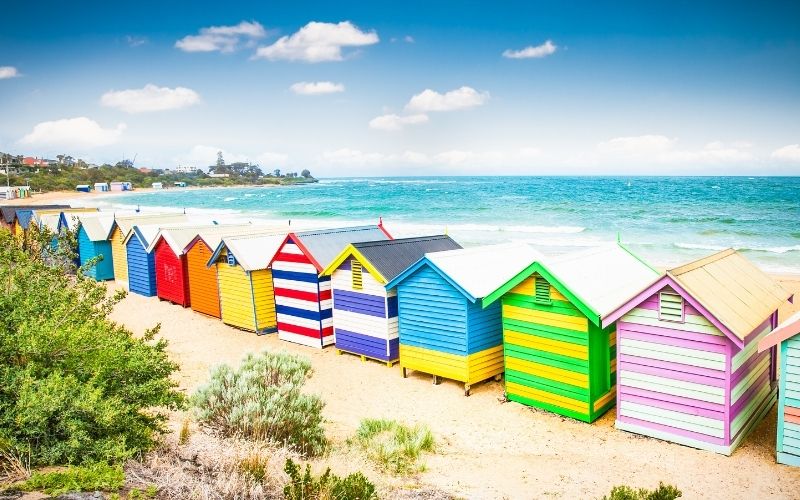Happy Friday everyone,
I must admit I’m feeling a bit shaggy today and writing this from Adelaide after my AFL footy team, Port Adelaide, won its final against Geelong last night.
I’m thinking it will prepare me for the week ahead and 2 big economic events:
1. It’s the first Tuesday of the month and that means Reserve Bank board meeting day. There is a consensus in the markets that we could see a cut in official interest rates to a record low 0.1 per cent.
2. On the same day the Federal Treasurer will deliver the delayed Federal Budget. It is going to be historic in its size. There are lots of leaks about what is going to be in it but I’ll keep you up-to-date on the facts next week when we know what’s in it.
Property Roundup… big variances between regions
Property research group RiskWise has produced an interesting roundup of the residential property market which shows that while houses show better prospects, some sectors of the property market remained high risk, particular inner-city apartments which were oversupplied and experiencing falling rents… on the back of working from home. As a result, many Australians are seeking lifestyle properties and often avoiding higher density locations.
RiskWise CEO, Doron Peleg says, in recent weeks there has been a material improvement in buyer sentiment and key data with a prime example being the relatively high auction clearance rates for houses in Sydney, with preliminary results that have been consistently well above the 70 per cent mark during the past four weeks. Melbourne’s market remains dormant for now.
Highlights of RiskWise’s state-by-state analysis is;
NSW:
There are major imbalances between the undersupply of family-suitable properties, mainly in the inner and middle rings of Sydney, and the high level of supply of investment properties. This will have a significant impact on price performance for these two dwelling types, where rental apartments are highly likely to significantly underperform the wider market.
Areas such as the city’s western suburbs, Byron Shire and the Central Coast have enjoyed exceptional capital growth over the past 10 years with further positive projections in the medium to long term, especially as more and more people work remotely and can enjoy a sea or tree-change without having to seek accommodation close to employment hubs, but rather move for lifestyle benefits.
The property market in Sydney is already showing early signs of bottoming and will likely do so by the first half of 2021 at which time prices will begin their projected upward trajectory.
Victoria:
The second wave of the COVID-19 has had a major and immediate impact on the local housing market. However, following the end of the pandemic, by mid-2021 Victoria’s capital city is expected to enjoy the steepest price appreciation and claim the title of Australia’s fastest recovering market.
Ultra-low interest rates will drive price increases once the pandemic is over when the long-held link between the cost of borrowing and housing prices would reassert itself.
Melbourne is more affordable than Sydney in terms of house-to-income and mortgage serviceability ratios while ABS data also projects that in 2026 Victoria’s capital will have a larger population than that of New South Wales.
Owner-occupiers, particularly first homebuyers, are now able to take advantage of the current market created by the pandemic especially as it has helped strengthen ‘work from home’ opportunities. Those with stable incomes not tied to employment hubs can now enjoy lifestyle and affordable housing.
In Victoria, the areas attracting these lifestyle buyers include Mornington Peninsula, Geelong, and Ballarat. Beachside suburbs especially are outperforming the market as they offer fantastic lifestyle opportunities.
Queensland:
COVID-19 has significantly increased the unemployment rate in Queensland with a greater impact on regional areas, particularly those with a heavy reliance on tourism. As of August 2020, the unemployment rate was 7.5 per cent. The sustained period of the border closure between Queensland and other states has been a contributing factor to the already substantial impact of COVID-19. This is due to the strong connection between Queensland and New South Wales and, to a lesser extent, Victoria.
COVID-19 has helped strengthen ‘work from home’ opportunities, meaning owner-occupiers can take advantage of ‘lifestyle’ prospects instead of being tied to employment hubs. The areas that attract those lifestyle buyers include the Gold Coast and Sunshine Coast.
Beachside suburbs especially outperform the market as they offer fantastic lifestyle opportunities.
However, while solid house price growth may be experienced in Brisbane, the inner-city unit market remains oversupplied and high risk.
South Australia:
Houses in well-located suburbs of Adelaide have performed well, however, it is well to be wary of the oversupplied new unit market.
As of August 2020, the SA unemployment rate has worsened to 7.9 per cent. As expected, COVID-19 has significantly increased the unemployment rate, which negatively impacts the residential property market. The recent bushfires have also had a significant impact.
Western Australia:
Sentiment may finally begin to improve in Perth, proving that COVID-19 remains well contained.
Perth housing prices contracted by 0.6 per cent in July, but are now on track to record a modest increase over the month of September. However, irrespective of COVID-19, while Perth is very affordable, the overall demand for both houses and units is low and the risk associated with units, which are experiencing continued weakness, is higher than the risk associated with houses.
Tasmania:
In early 2020, the property boom had eroded Hobart’s affordability advantage with price growth decelerating.
Affordability issues, with preferred alternatives in Melbourne, created a situation where the Apple Isle became less resilient and the property market continued to experience decelerated price growth despite low supply of dwellings.
COVID-19 has had a material impact on demand with a 2 per cent drop in house rents and a 4 per cent drop in unit rents since March. These measures provide a strong indicator regarding the unattractiveness of the market to property investors.
Northern Territory:
Darwin’s population continues to decline, and the Northern Territory economy is in a poor state. The poor economy continued to play a part in its subdued property market with 8.5 per cent price reductions for houses in the past three years and 18.7 per cent for units. It was the only state/territory in Australia that experienced population loss in 2019.
The advent of COVID-19 had a major impact on dwelling prices in Darwin with price reductions of 0.7 per cent for houses and 3.5 per cent for units over the three months to July.
ACT:
Extremely strong employment figures have been a key driver in the ability of the property market to deal relatively well with negative shocks, such as the recent downturn.
The ACT dwelling market has been the best performing market of the capital cities, increasing 1.3 per cent in value between the end of March and the end of July. In addition, the ACT market showed a healthy price growth of 4 per cent for houses and 2.7 per cent for units in the past 12 months and had, prior to COVID-19, a good medium to long-term outlook.
Consequently, while price growth is likely to decelerate, the risk for price reductions of 5 per cent or more appears to be low at this point of time.
Be wary of bank shares
Cross Asset Investment Specialist at Fidelity International, Anthony Doyle,was interviewed on the Ausbiz streaming service this week and remains wary on bank stocks despite the winding back of responsible lending rules last week which saw big gains in bank share prices.
“We’re still cautiously positioned on banks in general. Obviously, the changes have generated some improved sentiment around the sector but I’d still be very, very cautious, particularly in an environment of high unemployment rates and rising defaults. I think that it’s still too early to play the rotation into the banking sector at this point.
“We know that low interest rates will also dampen bank profits as a result of the net interest margin being squeezed… If anything, we would be underweight the sector in general.”
Looking at the wider macro view, Anthony thinks the RBA should go much harder to stimulate the economy at its meeting next week.
“I would hope they come in with a bazooka. They’ve got a gift in low bond yields – they can borrow at the 10-year part of the curve at only 75 basis points today and around 130 for 30 years. They should be borrowing with risk-free abandon to stimulate the Australian economy and, if anything, I think the danger is that they potentially try and roll back some of these support measures too early.”
A media company which could double in value in 2 years… hard to believe
Portfolio Manager at PrimeValue, Richard Ivers, says there has been too much focus on the balance sheet of some companies, which has detracted from long-term value. He’s dipping his toes into the value space with many businesses showing signs of recovery.
Companies like Southern Cross Broadcasting… it’s largely in the radio space – it’s the biggest radio network around Australia with metro stations like Triple M and it’s also big in regional markets, which are particularly strong.
“There has been focus on the balance sheet but we think they’ll be fine. They’ve raised equity, the earnings are recovering and the covenants are fairly loose for the next couple of years.
“So there’s plenty of room for them to improve their gearing as they pay down more debt, because they are generating cash. And if you look out a couple of years, we think they can get back to around $60 million NPAT or thereabouts and that puts them on PE of around six or seven times… it could potentially double in price in the next couple of years.”





























Trending
Sorry. No data so far.